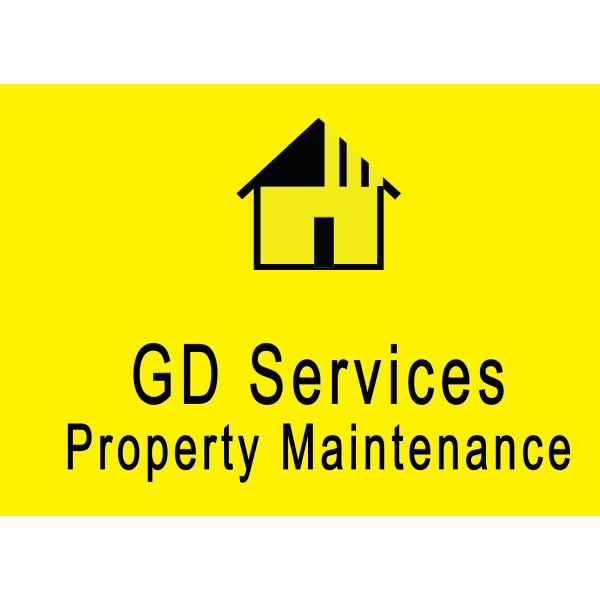Property Refurbishment in Wareham
Welcome to Hari-Construction Services Ltd, your trusted partner for all building and property maintenance needs in Rossmore and across Do... read more »
Welcome to GD Services, your trusted partner for all your building and maintenance needs in Poole and across Dorset. As a family-run busi... read more »
Welcome to Seels Complete Build Ltd, your trusted partner for all building and refurbishment needs in Trickett's Cross and the wider Dors... read more »
Welcome to DPB Construction Ltd, your trusted partner for all construction needs in Turlin Moor and throughou... read more »
Welcome to Cubycon Ltd., the premier choice for all your home improvement needs in Springbourne and across Dorset. As expert bathroom fit... read more »
Welcome to Ashland Builders Ltd, your premier choice for exceptional building services in Longfleet, Poole, and across D... read more »
LG Building Poole Ltd is your go-to... read more »
Welcome t... read more »
Double K Developments: Premier Property Refur... read more »
Welcome to Ed Bartlett Building Contractor, your go-t... read more »
Welcome to Brothers Build Ltd, your trusted partner f... read more »
Welcome to Pinesprings Developments, your premier cho... read more »
Welcome to JPW UK Services Ltd, your trusted partner... read more »
Welcome to Coast Kitchens & Bathrooms, your premier c... read more »
Welcome to T.gas Services Plumbing and Heating and Pr... read more »
Welcome to... read more »
Welcome to Universal Building Company South Ltd, your... read more »
Welcome to JP Free Ltd, your trusted partner for all... read more »
Welcome to Renovation and Revamp Company, your truste... read more »
Search Property Refurbishment in places nearby
Understanding Property Refurbishment in Wareham
Property refurbishment in Wareham is a fascinating journey that transforms tired spaces into vibrant, functional, and aesthetically pleasing environments. Whether you're a homeowner looking to enhance your living space or an investor aiming to increase property value, refurbishment offers a myriad of opportunities. Let's delve into the various aspects of property refurbishment, exploring the processes, benefits, and considerations involved.
The Importance of Property Refurbishment
Refurbishment is not just about aesthetics; it's about breathing new life into a property. In Wareham, a town rich in history and charm, refurbishment can preserve the unique character of older buildings while incorporating modern conveniences. This balance between old and new is crucial for maintaining the town's heritage and appeal.
Enhancing Property Value
One of the primary reasons for undertaking a refurbishment project is to increase the property's market value. By updating outdated features, improving energy efficiency, and enhancing curb appeal, homeowners can significantly boost their property's worth. This is particularly beneficial in a competitive market like Wareham, where property values are steadily rising.
Improving Living Conditions
Refurbishment can dramatically improve the quality of life for occupants. Upgraded kitchens, modern bathrooms, and energy-efficient systems contribute to a more comfortable and enjoyable living environment. In Wareham, where community and lifestyle are highly valued, these improvements can make a significant difference.
Key Steps in the Refurbishment Process
Embarking on a refurbishment project requires careful planning and execution. Here are the essential steps to ensure a successful transformation:
Assessment and Planning
The first step is to assess the property's current condition and identify areas that need improvement. This involves a thorough inspection to uncover any structural issues, outdated systems, or aesthetic concerns. Once the assessment is complete, a detailed plan is developed, outlining the scope of work, budget, and timeline.
Design and Approval
With a plan in place, the next step is to design the refurbishment. This involves selecting materials, colours, and layouts that align with the desired outcome. In Wareham, it's essential to consider local regulations and obtain any necessary approvals before proceeding with the work.
Execution and Monitoring
Once the design is finalised and approvals are secured, the refurbishment work begins. This phase involves coordinating with contractors, managing timelines, and ensuring quality control. Regular monitoring is crucial to address any issues promptly and keep the project on track.
Choosing the Right Professionals
Successful refurbishment hinges on selecting the right professionals. From architects to builders, each plays a vital role in bringing the vision to life. Here's how to choose the best team for your project:
Research and Recommendations
Start by researching local professionals with experience in property refurbishment. Seek recommendations from friends, family, or online reviews to gauge their reputation and reliability. In Wareham, where community ties are strong, word-of-mouth referrals can be particularly valuable.
Evaluating Experience and Expertise
It's essential to evaluate the experience and expertise of potential candidates. Look for professionals with a proven track record in similar projects and a deep understanding of local building codes and regulations. This ensures a smooth process and high-quality results.
Communication and Collaboration
Effective communication is key to a successful refurbishment project. Choose professionals who are responsive, open to feedback, and willing to collaborate closely with you throughout the process. This fosters a positive working relationship and ensures your vision is realised.
Budgeting for Refurbishment
Budgeting is a critical aspect of any refurbishment project. Without careful financial planning, costs can quickly spiral out of control. Here's how to manage your budget effectively:
Setting a Realistic Budget
Begin by setting a realistic budget that considers all aspects of the refurbishment, including materials, labour, and contingency funds for unexpected expenses. In Wareham, where property values vary, it's important to align your budget with the potential return on investment.
Prioritising Expenditures
Identify the most critical areas of the refurbishment and allocate funds accordingly. Prioritising expenditures ensures that essential improvements are completed first, while less critical updates can be addressed later if necessary.
Monitoring Costs
Regularly monitor expenses throughout the project to ensure they remain within budget. This involves tracking invoices, negotiating with suppliers, and making adjustments as needed to avoid overspending.
Incorporating Sustainable Practices
Sustainability is an increasingly important consideration in property refurbishment. By incorporating eco-friendly practices, homeowners can reduce their environmental impact and enjoy long-term savings. Here's how to make your refurbishment project more sustainable:
Energy Efficiency
Improving energy efficiency is a key component of sustainable refurbishment. This can be achieved by installing energy-efficient windows, upgrading insulation, and using energy-saving appliances. In Wareham, where energy costs can be high, these improvements can lead to significant savings.
Using Sustainable Materials
Choose sustainable materials, such as reclaimed wood, recycled metal, and low-VOC paints, to minimise environmental impact. These materials are not only eco-friendly but also add unique character to the property.
Water Conservation
Implementing water-saving measures, such as low-flow fixtures and rainwater harvesting systems, can reduce water consumption and lower utility bills. In Wareham, where water conservation is a priority, these practices are both practical and beneficial.
Addressing Common Challenges
Refurbishment projects can present various challenges, from unexpected structural issues to delays in the supply chain. Here's how to address common challenges effectively:
Dealing with Structural Issues
Structural issues, such as foundation cracks or roof leaks, can complicate refurbishment projects. It's essential to address these problems promptly with the help of qualified professionals to prevent further damage and ensure the property's safety.
Managing Delays
Delays can occur due to various factors, including weather conditions and supply chain disruptions. To minimise the impact of delays, maintain open communication with contractors and suppliers, and adjust timelines as needed.
Staying Within Budget
Staying within budget can be challenging, especially when unexpected expenses arise. To manage costs effectively, prioritise essential improvements, negotiate with suppliers, and explore cost-saving alternatives without compromising quality.
Legal and Regulatory Considerations
Understanding the legal and regulatory landscape is crucial for a successful refurbishment project. Here's what you need to know:
Building Regulations
Building regulations ensure that refurbishment work meets safety and quality standards. In Wareham, it's important to familiarise yourself with local regulations and obtain any necessary permits before commencing work.
Planning Permissions
Depending on the scope of the refurbishment, planning permissions may be required. This is particularly relevant for significant alterations or extensions. Consult with local authorities to determine if permissions are needed and ensure compliance with all requirements.
Health and Safety
Health and safety considerations are paramount during refurbishment projects. Ensure that all work is carried out in accordance with safety regulations to protect workers and occupants. This includes providing appropriate safety equipment and conducting regular inspections.
Maximising Return on Investment
Maximising return on investment is a key goal for many refurbishment projects. Here's how to achieve the best possible outcome:
Targeting Key Areas
Focus on refurbishing key areas that offer the highest return on investment, such as kitchens, bathrooms, and exterior improvements. These areas are often the most appealing to potential buyers and can significantly boost property value.
Quality Over Quantity
Invest in high-quality materials and workmanship to ensure lasting results. While it may be tempting to cut costs, prioritising quality can lead to better long-term returns and reduce the need for future repairs or updates.
Understanding Market Trends
Stay informed about local market trends and buyer preferences to tailor your refurbishment project accordingly. In Wareham, where property demand is strong, aligning your project with market trends can enhance its appeal and value.
Frequently Asked Questions
- What is the average cost of property refurbishment in Wareham? The cost varies depending on the scope of the project, but typically ranges from £20,000 to £100,000.
- How long does a typical refurbishment project take? The duration can vary, but most projects take between 3 to 6 months to complete.
- Do I need planning permission for refurbishment? It depends on the extent of the work. Consult with local authorities to determine if permissions are required.
- Can refurbishment increase my property's energy efficiency? Yes, incorporating energy-efficient systems and materials can significantly improve energy efficiency.
- What are the benefits of using sustainable materials? Sustainable materials reduce environmental impact, enhance property value, and often offer unique aesthetic qualities.
- How can I ensure my project stays within budget? Set a realistic budget, prioritise expenditures, and monitor costs regularly to avoid overspending.
Property refurbishment in Wareham is a rewarding endeavour that enhances both the value and enjoyment of a property. By understanding the process, choosing the right professionals, and incorporating sustainable practices, homeowners can achieve remarkable transformations that stand the test of time. Whether you're updating a historic home or modernising a contemporary space, refurbishment offers endless possibilities for creating a home that truly reflects your vision and lifestyle.
Send a message









